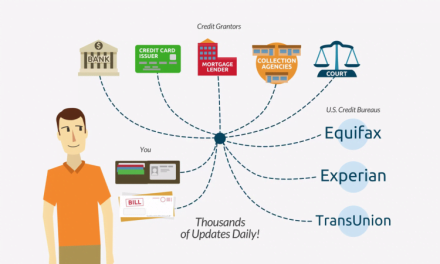Here’s a quick guide to rental increases for residential landlords with month-to-month tenants.
Notice periods
To capture increased rental value in a hot rental market, a residential landlord or property manager may serve a month-to-month tenant under a periodic rental agreement with a notice of change in rental terms on any day during the rental period.
If a residential landlord under a month-to-month rental agreement desires to increase rent, the length of the notice period depends on the amount of the rent increase. Two notices exist:
- the 30-day notice of change in rental terms [See first tuesday Form 570]; and
- the 60-day notice of change in rental terms. [See first tuesday Form 574]
To determine whether a 30-day or 60-day notice is required, the landlord compares the increased rent sought with the lowest rent amount paid by the tenant during the last 12 months. [Calif. Civil Code §827]
When the increase in monthly rent is equal to or less than 10% of the lowest amount of monthly rent paid during the previous 12 months, the landlord may serve the tenant with a 30-day notice of change in rental terms.
However, when the increase in rent is more than 10%, the landlord needs to serve the tenant with a 60-day notice of change in rental terms. [CC §827]
Related article:
Changing terms on a month-to-month tenancy – landlord’s notice to tenant
For instance, consider a residential landlord charging a month-to-month tenant a rent of $1,000 per month. The tenant’s rent has not been increased during the last 12 months. The landlord now seeks to increase the monthly rent by $100. Since the total rent increase is not more than 10%, the landlord may serve the tenant with a 30-day notice to change the terms of the rental or expired lease agreement.
Now consider a different landlord and tenant situation. Within the past 12 months, the landlord increased the tenant’s monthly rent $50 from $950 to $1,000. The landlord currently seeks to increase the monthly rent by an additional $100. The anticipated $100 increase is compared to the lowest amount of rent paid in any month during the past 12 months to determine the percentage increase — the $950. Here, the increase in rent is 10.5%. Since the increase in rent is greater than 10%, the landlord needs to serve the tenant with a 60-day notice of a change in rental terms.
Calculating rent due after an increase
Once a notice of change in rental terms is served on a tenant, the new terms stated in the notice immediately become part of the tenant’s rental agreement or expired lease agreement, both being month-to-month tenancies. [CC §827]
However, the new rental terms stated in the notice do not take effect until expiration of the 30-day or 60-day notice after the notice is served to the tenant.
For example, a property manager prepares a 30-day notice of change in rental terms to increase the rent on a month-to-month tenant. The due date for the payment of rent is the first day of each month.
The tenant is properly served with the 30-day notice on the 10th of June. The tenant intends to remain in possession at the new rent rate.
Since June 11th is the first day of the 30-day notice period, the rent does not begin to accrue at the increased rate until July 11th — the day after the 30-day notice expires. However, rent for all of July is payable in advance on the first of the month, including the number of days affected by the rent increase.
To calculate the advance rent due and payable on the first day of July, the rent is prorated as follows:
- the old daily rate of rent for the first ten days of the month; and
- the new daily rate of rent for the remaining 20 days in the month of July.
Pro rata rent due on the first is determined based on the number of days in the calendar month, unless the rental agreement contains a provision prorating rent on a 30-day basis.
Tenant responses to a change
On being served with a notice of a change in rental terms, the month-to-month tenant has three options:
- remain in possession and comply with the new rental terms;
- serve the landlord with a 30-day notice of intent to vacate and continue paying rent through the end of the 30-day period to vacate [CC §1946; see first tuesday Form 572]; or
- remain in possession, refuse to comply with the rental terms and raise defenses, such as retaliatory eviction, in the resulting unlawful detainer (UD) action. [See Chapter 26 of the Real Estate Property Management book]
Consider the tenant who receives the landlord’s notice changing rental terms to increase the rent. The tenant does not wish to continue in possession at the increased rent amount. Accordingly, the tenant serves the landlord with a 30-day notice of intent to vacate. [See first tuesday Form 572]
The tenant owes pro rata rent at the new rate for the days after the rent increase becomes effective through the date the tenant’s notice to vacate expires. The pro rata rent is payable in advance on the due date for the next scheduled payment of rent, usually the first. [CC §14]
Rent control restrictions
In communities with low density and rent control, limitations on rent increases exist for older units.
Most rent control ordinances allow a landlord or property manager to increase the rent to:
- obtain a fair return on their investment;
- recover the cost of capital improvements to the property; and
- pass through the cost of servicing the debt on the property.
Thus, without further authority from the rent control board, a landlord whose property is subject to rent control may increase rent in one of three ways:
- increase rent by the maximum percentage set by local ordinance;
- increase rent by the maximum percentage of the consumer price index (CPI) as set by local ordinance; or
- increase rent by the maximum amount previously set by the local rent control board.
Landlords of newly constructed units or individual units (single family residences/condos) may establish their own rent rates, when they are subject to rent control ordinances established prior to 1995.
For case examples and a more in-depth discussion of the non-residential rate increases, see Volume 4 of the first tuesday Realtipedia, Real Estate Property Management (Chapter 22: Changing terms on a month-to-month tenancy) and (Chapter 26: Three-day notices to quit for nonmonetary breaches).



















